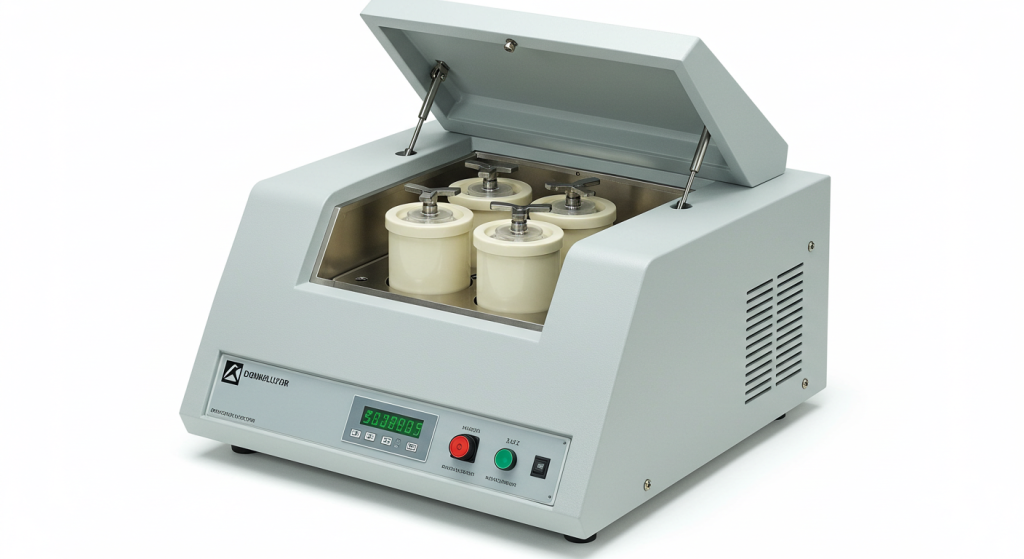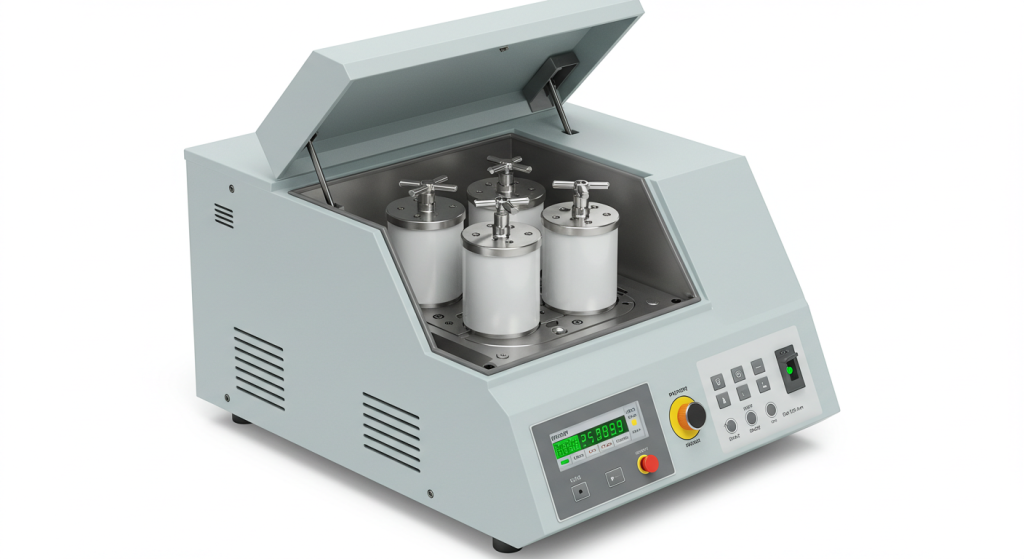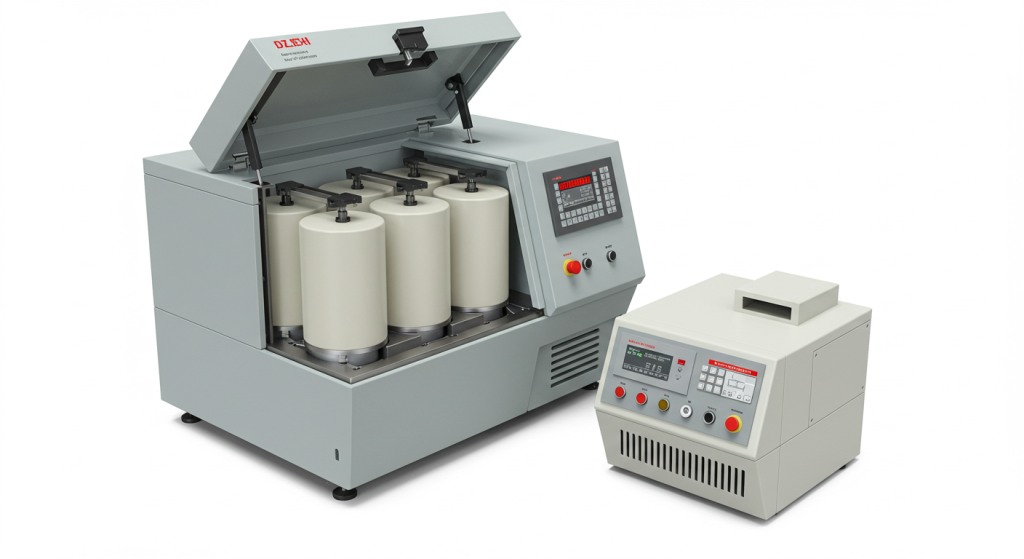Embarking on the journey of purchasing a laboratory rolling mill can be daunting, given the myriad of options and technical specifications. This guide aims to simplify that process, providing insights into the diverse world of these essential pieces of equipment. Many researchers and lab technicians often find themselves asking, “Which is the best laboratory roller mill?” The answer isn’t straightforward, as the ideal choice hinges on specific application requirements, material characteristics, desired output, and budget. Therefore, understanding the nuances of different types of mills – jar mills, roller mills, and ball mills – is crucial before making any purchase. We’ll explore each type, their applications, and the critical factors to consider when you’re in the market for a laboratory rolling mill.

Understanding the Basics: Jar Mills, Roller Mills, and Ball Mills
Before we delve into specifics about “How to buy laboratory rolling mill”, let’s establish some fundamental differences between these terms often used interchangeably. These are all mechanical devices designed for particle size reduction and mixing, but they achieve these goals using different mechanisms.
What is a Jar Mill?
A jar mill is a type of ball mill which consists of a cylindrical container, or jar, filled with grinding media (like balls or rods) and the material to be processed. The jar is placed on a set of rollers that rotate, causing the grinding media to tumble within the jar, effectively crushing, grinding, and mixing the materials. Jar mills are often used for small-batch processing and are versatile enough to handle a wide range of materials, from dry powders to slurries. The key to efficient jar mill operation lies in finding the right combination of jar size, media type, and rotational speed. The term “Jar Mill roller” specifically refers to the rollers that drive the jar’s rotation.

What is a Roller Mill?
A roller mill, in the context of laboratory equipment, is more specifically a jar roller mill. It’s the mechanism that provides the rotational movement to jar mills. The machine consists of multiple rollers, often made of materials like rubber or polyurethane, that hold and rotate cylindrical containers or jars. A dedicated “Lab Roller Mill” is commonly used for batch grinding, mixing, and dispersion processes. The speed and number of rollers on these mills can vary significantly, allowing for adaptability to different lab procedures and scales. Thus the question “Which is the best laboratory roller mill?” is really asking about the features and specification of the roller system as well as its compatible mill jars.
What is a Ball Mill?
A ball mill is a grinding mill that uses spherical grinding media. Both jar mills and planetary mills fall into this category, with “Ball Mill Machine For Laboratory” referring to a broad range of machines that utilize balls or similar shapes for particle size reduction. Ball mills operate on the principle of impact and attrition, with the grinding media repeatedly colliding with the material being processed. When evaluating options for “How to buy laboratory rolling mill”, keep in mind that a ball mill may not be the perfect solution if precise dispersion or gentle milling is desired.

Exploring “Why to Buy our PU Roll Ball Mill Pot?”
The importance of the milling jar material can’t be overstated. When choosing the components that support the grinding process, one may need to ask “Why to buy our PU roll ball mill pot?” and that question deserves a thorough answer. Polyurethane (PU) mill pots or jars have unique properties that make them suitable for various laboratory applications. They’re highly durable, resistant to abrasion, and chemically inert, making them a fantastic option for processing various samples without contamination. PU also offers shock resistance, which helps protect your materials during the grinding process. The flexibility of polyurethane also allows for a tight seal, reducing leaks. Our PU ball mill pots are available in different sizes, fitting different laboratory set ups and requirements and compatible with “Lab Roller Mill” configurations. So, if your application demands purity, durability, and versatility, consider choosing a “PU roll ball mill pot”. Moreover, the cost-effectiveness of PU makes it an attractive option.
Applications of Laboratory Rolling Mills
What is a Rolling Mill Used For?
The applications of a rolling mill or a jar mill within a laboratory are broad. They are used to grind, mix, and disperse various materials. Primarily, rolling mills are used for:
- Particle Size Reduction: Grinding solid materials into fine powders or granules.
- Mixing: Blending multiple ingredients into a homogenous mixture.
- Dispersion: Breaking up agglomerates and ensuring the even distribution of a substance.
- Homogenization: Creating a uniform consistency within a sample.
These capabilities make them an indispensable tool in chemistry, material science, pharmaceuticals, ceramics, and many other disciplines. The process is controlled by varying the rolling speed, the filling level of the jar, and the type and size of the grinding media.
What is the Use of Roller Mill in Pharmaceuticals?
In the pharmaceutical industry, “What is the use of roller mill in pharmaceuticals?” is a frequently asked question. Roller mills or jar mills are crucial for:
- Active Pharmaceutical Ingredient (API) Size Reduction: Creating the required particle size for optimal absorption in the human body.
- Excipient Processing: Milling and blending inactive ingredients to ensure proper formulation.
- Drug Formulation: Mixing and dispersing drug substances into a vehicle to create stable and effective dosage forms.
- Sample Preparation: Processing samples for quality control.
The precision and control offered by these laboratory mills are crucial for producing pharmaceutical products that meet stringent quality and safety requirements. They ensure consistency in the size of the raw ingredients and the homogeneity of the finished product. Understanding “How to buy laboratory rolling mill” in relation to pharmaceuticals, helps you choose the right mill for safety and precision.
Key Considerations When Choosing a Laboratory Rolling Mill
When the time comes to select a laboratory rolling mill, several factors should be carefully evaluated to ensure the chosen equipment meets the specific needs of your application.
Type of Material and Required Fineness
The first consideration should be the nature of the material you will be processing. Is it abrasive, sticky, fibrous, or chemically reactive? “Which is the best laboratory roller mill?” for processing hard materials may not be suitable for softer ones. The desired level of fineness also determines the type of media, mill, and parameters you will require. For nano-scale processing, Planetary Ball Mill for laboratory will be needed.
Capacity and Batch Size
Determine the typical volume of materials you will need to process. The jar or pot size and the number of jars the roller mill can accommodate should align with the required capacity. The machine you choose should accommodate your standard batch sizes, and should ideally be able to scale up if necessary.
Speed Control and Programmability
Variable speed control is essential for optimizing the milling process. Some advanced mills have programmable features for complex sequences, offering more process control and standardization. Precise control over the “Jar roller” is essential for consistent results, therefore “How to buy laboratory rolling mill” also involves looking at the control features.
Material of Construction
The jar, rollers, and frame should be made of chemically compatible and robust materials that can withstand the intended usage and ensure process integrity. Also, the “Ball mill Jar” construction must match the application and the materials being processed.
Safety Features
Safety should always be a priority. Look for features like automatic shut-offs, emergency stop buttons, and enclosure for dust and noise control.
Ease of Use and Maintenance
Consider how user-friendly the equipment is. A well-designed unit will have easy-to-load jars, straightforward controls, and simple cleaning and maintenance procedures.
Cost and Budget
The initial investment, as well as the long-term costs for maintenance and replacement parts, should be factored into the decision. The “Ball Mill manufacturer” should provide a price within your budget that does not compromise your needs.
Different Types of Laboratory Roller Mills in Detail
Let’s delve deeper into the specific types of laboratory rolling mills to provide a more granular view on “How to buy laboratory rolling mill”.
Standard Jar Roller Mills
These are the basic models, usually equipped with two or more parallel rollers that hold and rotate jars. They’re suitable for general grinding, mixing, and dispersion tasks. They come in various sizes, can be single or multi-tiered, and sometimes include variable speed controls.
High-Capacity Roller Mills
These mills are designed to accommodate a larger number of jars, or larger jars, increasing processing capacity. They are often seen in situations where a large volume of work must be achieved in a short period of time. They’re ideal for labs needing to process multiple samples simultaneously.
Planetary Ball Mills
Planetary ball mills utilize a rotating disk where jars are placed. The jars counter-rotate on this disc, which results in very high grinding energy and highly efficient particle size reduction. These mills are often the “Ball Mill Machine For Laboratory” of choice for fine and ultrafine powder production, especially at the nano-scale. It’s important to consider this “Planetary Ball Mill for laboratory” if ultrafine or nano-scale products are needed.
Roll Mills
These are typically larger machines often used to work on more viscous materials such as polymers or paint and come in various sizes and usually have two or three heavy rolls. These “Roller mill grinder” devices are more about mixing and compounding and not typically found in a lab. They are more common in industrial settings.
The Significance of Media Selection
The selection of grinding media is critical for efficient milling. Different materials and sizes will affect the outcome.
Types of Media
- Ceramic Balls: (e.g., alumina, zirconia): Suitable for many applications because of their high hardness, and resistance to chemical reactions.
- Steel Balls: Durable and cost-effective, useful for more abrasive materials but can be less inert.
- Glass Balls: Inert and good for materials where contamination must be strictly avoided.
- PU Balls or Cylinders: Ideal for gentler mixing as they are shock-resistant, and they’re less likely to damage softer materials, also they have low contamination issues.
Size and Shape of Media
The size and shape of the grinding media should be selected based on the material being processed and the desired fineness. Smaller media are generally used for fine grinding, while larger media are used for coarser grinding. Media can be spherical, cylindrical or a mix.
Maintenance and Troubleshooting
Proper care will extend the life of your laboratory rolling mill. Regular maintenance should include:
- Cleaning: Always thoroughly clean the jars and rollers after each use.
- Lubrication: Keep all moving parts lubricated according to the manufacturer’s specifications.
- Inspection: Inspect for wear and tear on rollers, jars, and other critical components.
- Calibration: Regularly check the speed and time controls for accuracy.
Common troubleshooting issues can include uneven grinding, excessive noise, or problems with the motor or drive system. Many of these can be addressed with a visual inspection and simple maintenance practices.
Key Takeaways
Understanding how to buy laboratory rolling mill is essential for achieving optimal research results. Here is a breakdown of key areas to consider:
| Category | Consideration |
|---|---|
| Mill Type | Determine whether a jar mill, roller mill, ball mill, planetary mill, or another type is best suited to your needs. “Which is the best laboratory roller mill?” is a question you should ask in the context of your particular application. |
| Material Compatibility | Ensure the mill and its components are compatible with your materials, especially if corrosive or highly abrasive products are used. |
| Milling Jar Type | Consider what material the milling jar should be constructed from; “Why to buy our PU roll ball mill pot?” is a question that’s important. PU mill jars offer durability and inertness, among other factors. |
| Features | Look for speed control, programmable functions, and safety features. |
| Media | Select the correct media for your application – ceramic, steel, or another material. |
| Budget | Consider both initial costs as well as long term running costs. |
Conclusion
When looking at how to buy laboratory rolling mill, it is a multi-faceted process. The selection of the right equipment is critical to your overall efficiency and the quality of your output. Asking questions such as “Which is the best laboratory roller mill?” and “Why to buy our PU roll ball mill pot?” are vital to choose the right product for the application. By understanding the various types of mills, their applications, and the critical factors involved, you can ensure a successful outcome and enhance your lab’s capabilities. If your lab is going to be using mill pots, don’t forget to factor in “Why to buy our PU roll ball mill pot?” as you decide the specific features you require. Choosing the correct mill can make a large impact on the efficiency of your lab and accuracy of your results.
